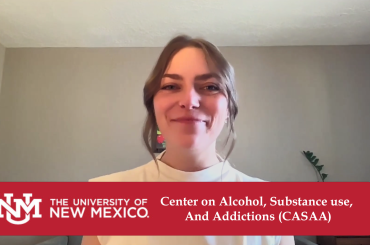The term “gateway drug” has been around for several decades. Generally, we have thought about gateway drugs as cigarettes, alcohol, and marijuana. The basic idea is that using these substances, especially early in life, increases the likelihood of becoming addicted to these drugs later on, and also the likelihood of using and possibly becoming addicted to harder drugs like cocaine, meth, and opioids. Only recently has the term gateway drug been applied to pornography.
Before delving too deeply into the idea of pornography as a gateway to sexual compulsivity and similar life issues, I think it is wise to look at the research on substance abuse to see if gateway drugs are a real thing or just lingering social paranoia from the “Just Say No” 1980s.
What does the research say about substance abuse?
When we look at substance abuse research, we find clear evidence that introductory (gateway) drugs like cigarettes, alcohol, and marijuana do indeed increase the probability for both more and stronger drug use down the line. For example, rats injected with tetrahydrocannabinol (THC, the principal psychoactive constituent of cannabis) increased the self-administration of heroin, morphine, and even nicotine.[i] Similar research shows that mice injected with nicotine increased the self-administration of cannabis, cocaine, and other drugs.[ii] Even caffeine has been linked to more and stronger drug use – and that’s in epidemiological studies involving humans, not rats and mice.[iii]
Another clear risk factor for more and stronger drug use is age of first use. The lower the age of first use, the higher the likelihood of addiction.[iv] So, based on a large body of scientific research, it’s abundantly clear that gateway drugs, especially when they are first used in childhood or adolescence, are a very real thing.[v]
But does that mean porn is also a gateway drug?
We could certainly use more study on this topic, but the small amount of research we’ve got, plus extensive anecdotal evidence from therapists like myself who treat both substance and behavioral addictions, suggests the answer is yes. For instance, one relatively large survey of self-identified adult sex addicts found that 41% were using pornography before the age of 12.[vi] And we need to keep in mind the fact that when today’s adult sex addicts were 12 or younger, pornography was not nearly as accessible as it is today. As recently as ten or fifteen years ago, kids had to work pretty hard to view significant amounts of pornography. Today? No effort needed. In fact, recent research suggests that in today’s world the average age of first exposure to pornography is 11.[vii]
So yes, based on that information it would appear that porn is a potential gateway into problems with relationship intimacy, compulsive sexual behaviors, and possibly even substance abuse. Exacerbating matters is the fact that today’s young people have unfettered access to an ever-expanding online sexual wonderland, and the vast majority of them take advantage of this. If you don’t believe me, consider the tribulations of Canadian sex researcher Simon Lajeunesse. All the way back in 2009, at the very start of our current online porn explosion, when Lajeunesse tried to conduct research on the effects of porn use on adolescent males, he couldn’t, because he was unable to locate any potential test subjects who weren’t already using porn.[viii] Without a control group of non-porn users, there was no way to make comparisons.
Please understand that I am not in any way saying that every person who is exposed to porn at a young age will develop later-life problems with sex and intimacy. That said, it does appear that using porn early in life presents risks that are similar to risks associated with the early-life use of cigarettes, alcohol, and marijuana.
The Gateway to Intimacy Issues and Porn Addiction
For the most part, individuals who are vulnerable to addictions and other psychological issues, usually thanks to genetics coupled with a family history of abuse and neglect (alcoholism, violence, mental health problems in caregivers, etc.),[ix] are absolutely at risk for sex and intimacy issues, just as they are at risk for alcohol and drug-related problems. It is also true that some kids who extensively view porn, even those without genetic predispositions or troubling family histories, are nonetheless at risk for similar issues.
From a clinical perspective, this is all unsurprising.In my three decades creating programs and treatment for men and women who struggle with compulsive sexual behaviors, one thing has become increasingly apparent: Whatever behavior it is that drives these troubled individuals into treatment, the starting point for the behavior is usually pornography.
Porn can be a gateway to more intense porn.
For some of these individuals, pornography is the primary sexual behavior with which they struggle. Over time, for these individuals, porn has become the be-all, end-all of their sexual life. Many have never been sexual with another person face-to-face. Their sexual experiences have been exclusively online. Others have experienced both pixel sex and real-world sex, only to find that they prefer pixel sex because it’s more varied and provides more intensity. Either way, these individuals tend to escalate their porn use by looking at porn for longer periods of time, and by looking at more intense/hardcore versions of pornography.
Porn can be a gateway to real-world sex problems.
For other people, porn seems to be more of a traditional gateway drug, leading them from the Internet into real-world behaviors like strip clubs, prostitutes, affairs, exhibitionism, voyeurism, and more. At times, these individuals are married or in an otherwise committed relationship with which they are perfectly happy. They love their spouse and do not want to hurt their spouse. But they started looking at porn once in a while, and then they went to a strip club, and then they started webcamming, and then they had a one-night stand, and then…. Suddenly, they find themselves engaging in all sorts of behaviors that violate their values and relationship boundaries and they can’t seem to stop, no matter how hard they try. All because they looked at a little bit of porn.
Before concluding this post, I think it’s important to state that looking at porn does not mean you are automatically going to become a porn addict or a sex addict or any other type of addict. This is similar to what we see with substances, where experimentation with cigarettes, alcohol, and marijuana do not doom you to a life of addiction. That said, viewing porn, especially at an early age, does increase the risk for later-life problems, the same as early-life experimentation with substances increases the risk for later-life issues. And that, my friends, is the essence of a gateway drug.
[i] Ellgren, M., Spano, S. M., & Hurd, Y. L. (2007). Adolescent cannabis exposure alters opiate intake and opioid limbic neuronal populations in adult rats. Neuropsychopharmacology, 32(3), 607-615.
Tomasiewicz, H. C., Jacobs, M. M., Wilkinson, M. B., Wilson, S. P., Nestler, E. J., & Hurd, Y. L. (2012).
Proenkephalin mediates the enduring effects of adolescent cannabis exposure associated with adult opiate vulnerability. Biological psychiatry, 72(10), 803-810.
Cadoni, C., Pisanu, A., Solinas, M., Acquas, E., & Chiara, G. (2001). Behavioural sensitization after repeated exposure to Δ 9-tetrahydrocannabinol and cross-sensitization with morphine. Psychopharmacology, 158(3), 259-266.
Panlilio, L. V., Zanettini, C., Barnes, C., Solinas, M., & Goldberg, S. R. (2013). Prior exposure to THC increases the addictive effects of nicotine in rats. Neuropsychopharmacology, 38(7), 1198.
[ii] Kandel, E. R., & Kandel, D. B. (2014). A molecular basis for nicotine as a gateway drug. New England Journal of Medicine, 371(10), 932-943.
Keyes, K. M., Hamilton, A., & Kandel, D. B. (2016). Birth cohorts analysis of adolescent cigarette smoking and subsequent marijuana and cocaine use. American journal of public health, 106(6), 1143-1149.
Ren, M., & Lotfipour, S. (2019). Nicotine Gateway Effects on Adolescent Substance Use. Western Journal of Emergency Medicine, 20(5), 696.
[iii] Curran, C. P., & Marczinski, C. A. (2017). Taurine, caffeine, and energy drinks: Reviewing the risks to the adolescent brain. Birth defects research, 109(20), 1640-1648.
Arria, A. M., Caldeira, K. M., Kasperski, S. J., O’Grady, K. E., Vincent, K. B., Griffiths, R. R., & Wish, E. D. (2010). Increased alcohol consumption, nonmedical prescription drug use, and illicit drug use are associated with energy drink consumption among college students. Journal of addiction medicine, 4(2), 74.
[iv] DeWit, D. J., Adlaf, E. M., Offord, D. R., & Ogborne, A. C. (2000). Age at first alcohol use: a risk factor for the development of alcohol disorders. American Journal of Psychiatry, 157(5), 745-750.
Grant, B. F., Stinson, F. S., & Harford, T. C. (2001). Age at onset of alcohol use and DSM-IV alcohol abuse and dependence: a 12-year follow-up. Journal of substance abuse, 13(4), 493-504, among other studies.
[v] Odgers, C. L., Caspi, A., Nagin, D. S., Piquero, A. R., Slutske, W. S., Milne, B. J., … & Moffitt, T. E. (2008). Is it important to prevent early exposure to drugs and alcohol among adolescents? Psychological Science, 19(10), 1037-1044.
[vi] Hall, P. (2013). Understanding and treating sex addiction: A comprehensive guide for people who struggle with sex addiction and those who want to help them, p 40. London: Routledge.
[vii] Wolak, J., Mitchell, K., & Finkelhor, D. (2007). Unwanted and wanted exposure to online pornography in a national sample of youth Internet users. Pediatrics, 119(2), 247-257.
[viii] Liew, J. (2009). All men watch porn, scientists find. The Telegraph. Retrieved Jan 16, 2015 from telegraph.co.uk/women/sex/6709646/All-men-watch-porn-scientists-find.html.
[ix] Weiss, R. (2014). Addiction: Nature versus nurture. Psychology Today. Retrieved Jan 16, 2015 from blogs.psychcentral.com/sex/2014/03/addiction-nature-versus-nurture/.






